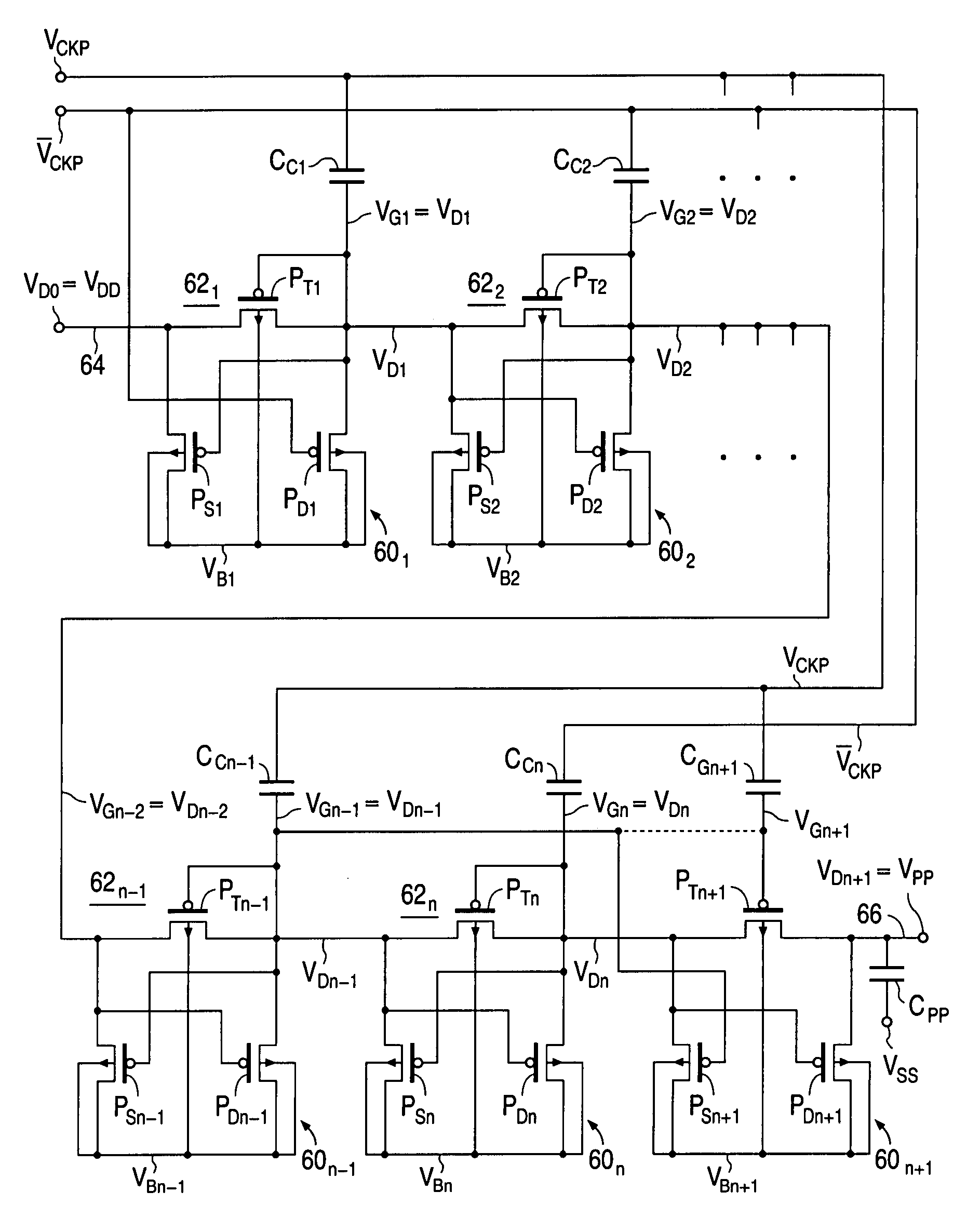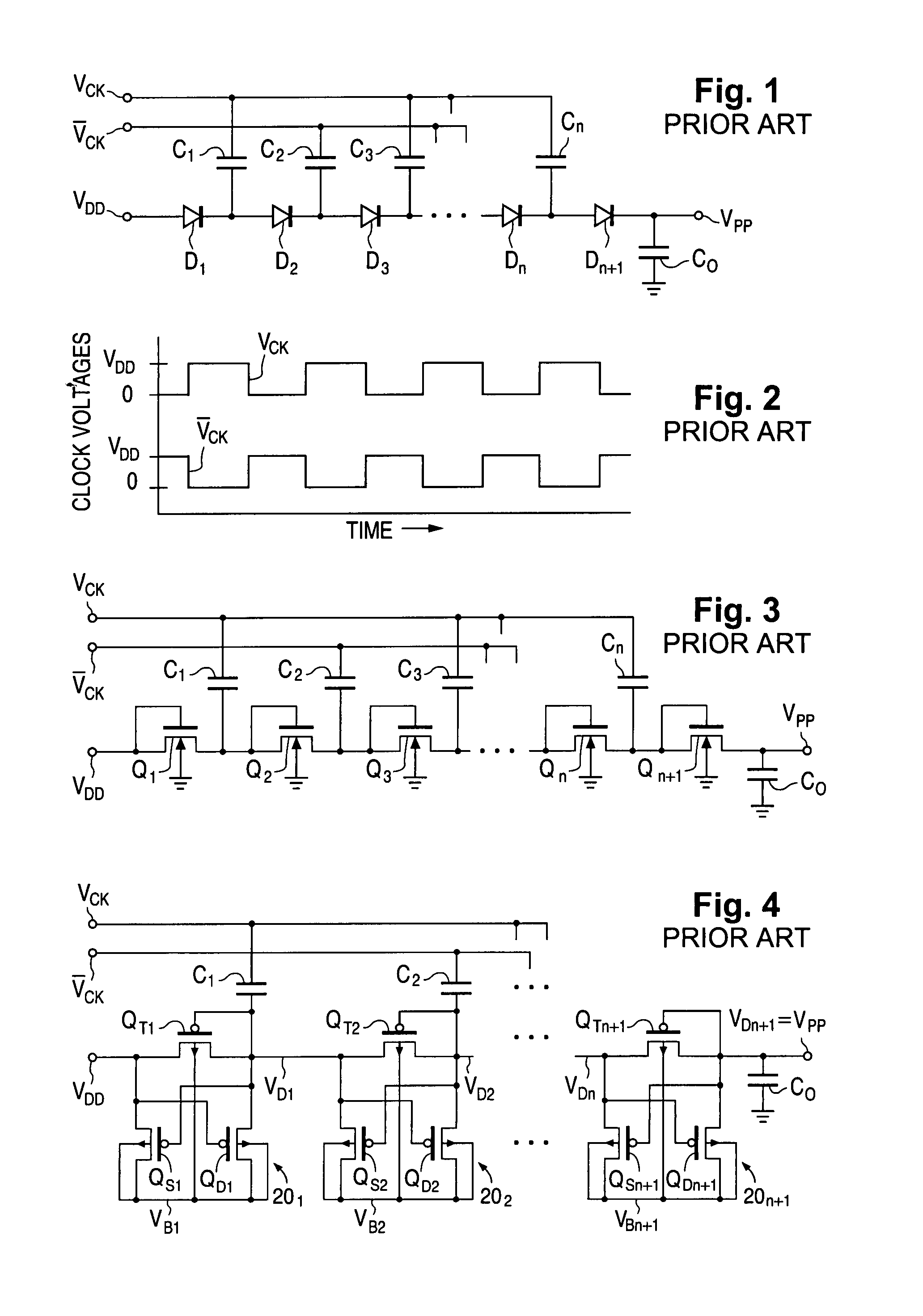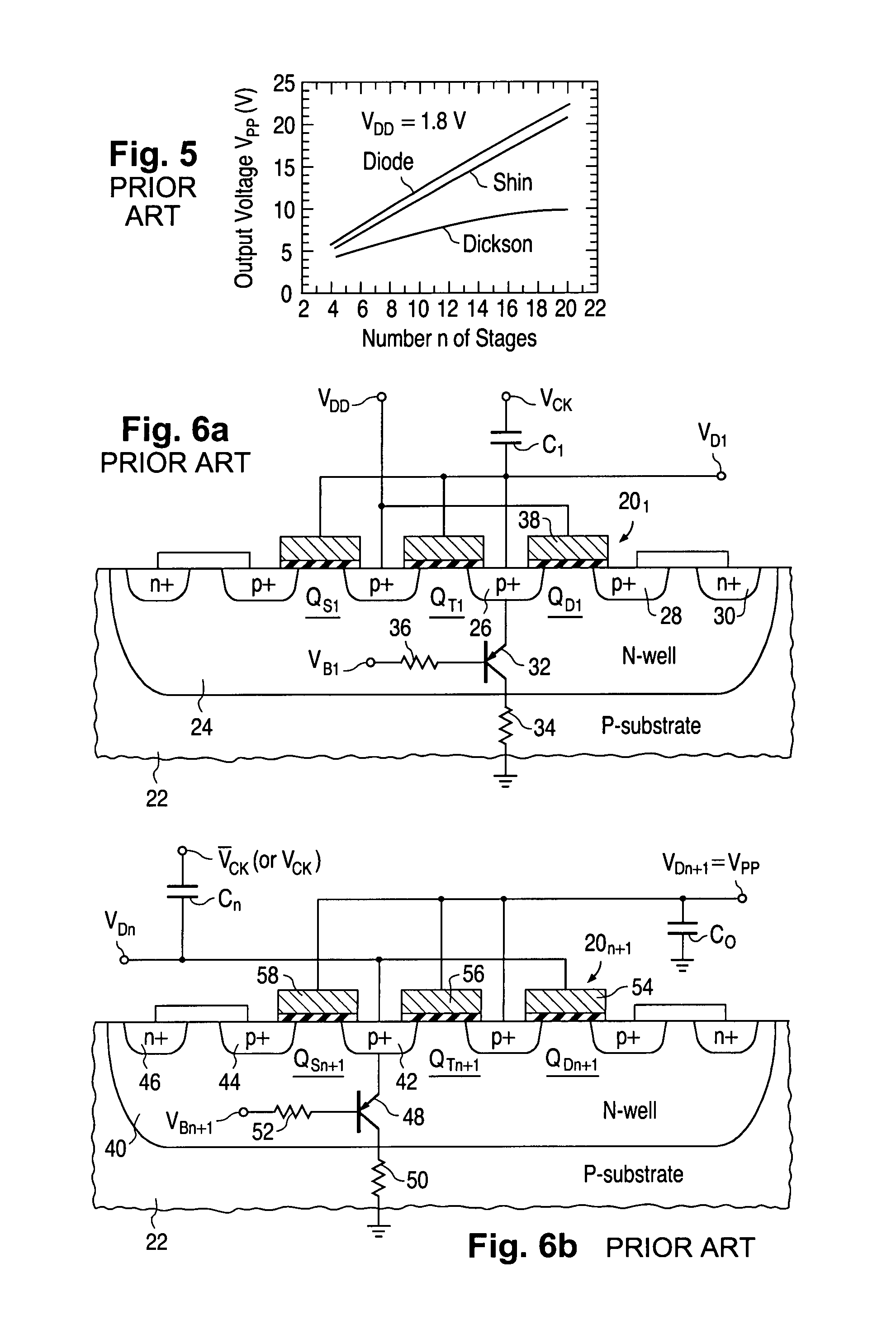Charge pump with ensured pumping capability
a technology of shin's pump and discharge pump, which is applied in the field of electronic circuitry, can solve the problems of reducing the power supply voltage range, the vsub>pn /sub>pn is basically not scalable, and the diode pump cannot be readily scaled downward, so as to avoid bipolar action difficulties, reduce the performance of shin's pump, and be easily scaled to small dimensions
- Summary
- Abstract
- Description
- Claims
- Application Information
AI Technical Summary
Benefits of technology
Problems solved by technology
Method used
Image
Examples
Embodiment Construction
[0052]FIGS. 7a and 7b (collectively “FIG. 7”) illustrate an n-stage two-phase positive charge pump in accordance with the invention. Beginning and end portions of the two-phase positive charge pump are depicted in FIG. 7a. An intermediate pump portion is depicted in FIG. 7b. The charge pump of FIG. 7 operates from a power supply that provides high supply voltage VDD and a low supply voltage VSS, typically ground reference, which define a power-supply voltage range VDD−VSS. High supply voltage VDD is 2.5-4.0 V, typically 3.0 V, when low supply voltage VSS is ground reference.
[0053]The charge pump of FIG. 7 consists of n+1 charge-transfer cells 601, 602, . . . 60n−1, 60n, and 60n+1 arranged in series, n substantially identical primary pump capacitive elements CC1, CC2, . . . CCn−1, and CCn respectively corresponding to charge-transfer cells 601-60n, an additional capacitive element CGn+1, an output capacitive element CPP, and sources (not separately shown) of a first clock voltage sig...
PUM
 Login to View More
Login to View More Abstract
Description
Claims
Application Information
 Login to View More
Login to View More - R&D
- Intellectual Property
- Life Sciences
- Materials
- Tech Scout
- Unparalleled Data Quality
- Higher Quality Content
- 60% Fewer Hallucinations
Browse by: Latest US Patents, China's latest patents, Technical Efficacy Thesaurus, Application Domain, Technology Topic, Popular Technical Reports.
© 2025 PatSnap. All rights reserved.Legal|Privacy policy|Modern Slavery Act Transparency Statement|Sitemap|About US| Contact US: help@patsnap.com



